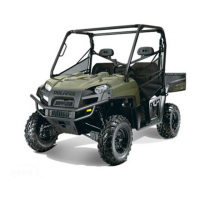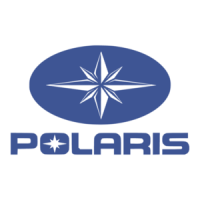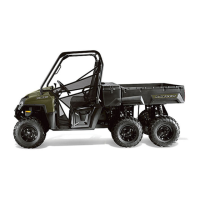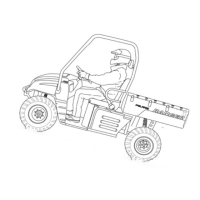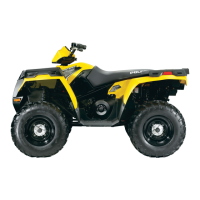42
OPERATION
Driving Through Water
Your POLARIS RANGER can operate through water up to a maximum recommended depth
equal to the floorboards.
NOTICE: Immersion can result in major damage if the vehicle isn't serviced correctly and promptly.
After immersion, always take the vehicle to your dealer service. Do not start the engine! If it's
impossible to bring the vehicle to your dealer before starting the engine, perform the service
outlined on page 76, and take the vehicle to your dealer at the first opportunity.
Follow these procedures when operating
through water:
1. Determine water depths and current
before entering water.
2. Choose a crossing where both banks
have gradual inclines.
3. Proceed slowly, avoiding rocks and
obstacles.
4. Avoid operating through deep or fast-
flowing water.
WARNING! The large tires on your RANGER
may cause the vehicle to float in deep or fast-
flowing water, which could result in loss of
control and lead to serious injury or death.
Never cross deep or fast-flowing water with your
RANGER.
5. After leaving water, always dry the
brakes by applying light pressure to the
pedal repeatedly until braking action is
normal.
NOTICE: After running your vehicle in water, it's critical that you perform the services outlined in the
Periodic Maintenance Chart beginning on page 59. Give special attention to engine oil,
transmission oil, all gearcase fluids, and all grease fittings.
Floorboard
